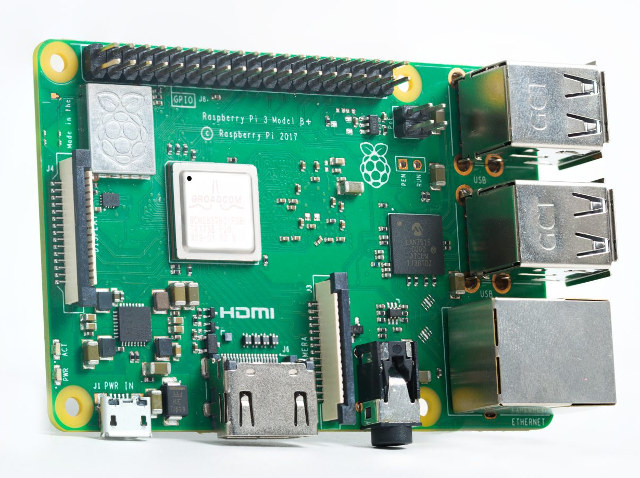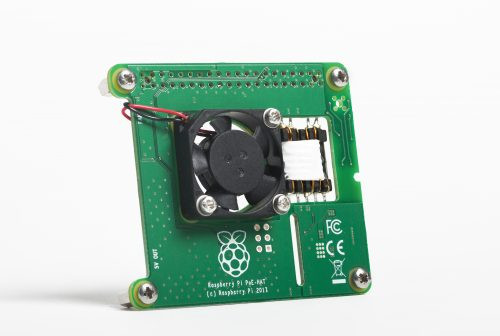The Raspberry Pi Foundation has just introduced a updated version of their popular Raspberry Pi 3 Model B board with a Model B+ that increases the processor clocked up to 1.4 GHz, adds dual-band 802.11ac WiFi, and Bluetooth 4.2, Gigabit Ethernet (via USB 2.0 to Ethernet bridge), as well as support for PoE (Power-over-Ethernet) via an external HAT add-on board.

Raspberry Pi 3B+ specifications:
- SoC – Broadcom BCM2837B0 64-bit ARMv8 quad core Cortex A53 processor @ 1.4GHz with dual core VideoCore IV GPU
- System Memory – 1GB LPDDR2
- Storage – micro SD slot
- Video & Audio Output – HDMI 1.4 and 4-pole stereo audio and composite video port
- Connectivity – Gigabit Ethernet (via Microchip LAN7515 USB 2.0 to GbE bridge), maximum throughput 300 Mbps), WiFi 802.11 b/g/n/ac and Bluetooth 4.2 LE (via Cypress CYW43455 based module)
- USB – 4x USB 2.0 host ports, 1x micro USB port for power
- Expansion
- 40-pin GPIO header
- MIPI DSI for Raspberry Pi touch screen display
- MIPI CSI for Raspberry Pi camera
- Power Supply
- 5V up to 2.4A via micro USB port
- PoE via HAT board
- Dimensions – 85 x 56 x 17 mm
The new Raspberry Pi board is said to improve PXE network and USB mass-storage booting, as well as thermal management thanks to a heat spreader placed on top of BCM2837B0 SoC.

Since they’ve only done a few tweaks, software support will remain the same with NOOBS, Raspbian, and the many other available distributions.
The Raspberry Pi 3 Model B+ is now sold for $35 on Element14 or RS Components, and will remain in production until at least January 2023. The PoE HAT is available on backorder for $20 with stock expected for April 9, at least on Newark.

Jean-Luc started CNX Software in 2010 as a part-time endeavor, before quitting his job as a software engineering manager, and starting to write daily news, and reviews full time later in 2011.
Support CNX Software! Donate via cryptocurrencies, become a Patron on Patreon, or purchase goods on Amazon or Aliexpress




